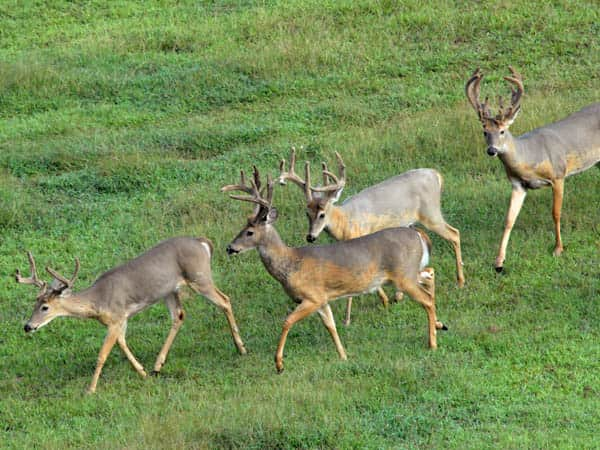Interview: Big Buck Location and Management with Mark Drury
OutdoorHub Reporters 02.27.12

Today, Mark Drury and his brother Terry are two of the industry leaders in TV production and video production. The Drurys have produced more than 200-feature-length videos in more than two decades. They’ve also produced more than 250 TV episodes that air onWildlife Obsession, Dream Season and Bow Madnesson the Outdoor Channel and Natural Born Killers on the Pursuit Channel. I sat down with Mark previously to talk about choosing a bow setup, click here to read it.
Question: Mark, we all see you and Terry taking big deer every year with your bows. How are you able to consistently find and take those big deer?
Drury: The answer is observed movement. The more you hunt one piece of property or the more intimate you become with the place you’re hunting, the better you are at hunting the deer on that land. Soon, you’ll start to learn where, how and when deer move, and you’ll see consistent patterns that almost always will tell you where and when the older-age-class bucks will be. We’ve learned over the years that if you can separate the place the deer feed from the area where they bed, having a definite transitional zone that the deer can travel through between feeding and bedding, you can set up in those transitional zones. You can take an older-age-class buck with your bow if you’re hunting during the early season or the rut.
Another tactic we use is what we call a “green-field-within-a green-field.” When we plant our major green fields, we also plant a little strip of clover or some other type of late-season planting that will be green after the rut. We usually make this planting on the edge of our major food plot planting. Then after the rut ends, we’ll set up on the edge of that green field where we have our late-season crop, sometimes that’s clover, planted to take bucks after the rut.
Question: Mark how did you develop the green-field-within-a-green-field idea?
Drury: We started by planting a soybean field. The whitetails usually feed on those soybeans all summer long. But from mid-September to late-September, those soybean leaves turn brown, and no longer have food value for the deer. Any green fields on the edges of those soybean patches will start putting out new foliage. So, I plant a green field around each soybean field between mid-August to late-August here in Missouri where I live and hunt. As the soybeans begin to die, the new young green fields start sprouting, so I don’t lose any of the deer that I’ve concentrated in an area with the soybeans during the summer and watched. By October, those bucks are so patterned to the edge of the soybean field where the green field is, that we can pick and choose the bucks we want to take.
 Question: Besides clover, what are you planting, Mark?
Question: Besides clover, what are you planting, Mark?
Drury: I like Mossy Oak BioLogic Last Bite, a product that I tested during the 2010 season for Mossy Oak BioLogic. I also like BioLogic Winter Peas, Winter Bulbs and Sugar Beets and Maximum.
Question: Mark, most people believe to consistently take big bucks on a piece of property, you need to harvest some does. How many does do you take off the property you’re hunting?
Drury: You have to remember that you’re managing a deerherd, and that there are many factors that must be considered to answer that question. For instance, for the last several years, we’ve had some really severe winters here in Missouri. So, we’ve been taking fewer does now than we did a few years ago when the winters were much milder. Deer are born at almost a 1-to-1 ratio. In other words, you should have 50% bucks and 50% does born each year. I use summer and fall trail camera surveys to try to determine how many bucks versus does there are. From these surveys, I’ve learned that the buck-to-doe ratio can vary quite a bit on each individual property.
I have one piece of land in Missouri that I hunt that has a very low deer density. So, on that property I try to harvest about the same number of does as I do bucks. On some land I hunt in Iowa, there’s a large number of deer. I try to harvest or get my hunters to harvest 10 does to every 1 buck there. I’ve learned that deer management is property specific. Until you use trail cameras and do a deer census on a particular piece of property, you can’t set up a harvest management prescription to keep your deerherd in balance and enable that herd to produce the maximum number of big bucks. I think you have really got to use your own survey system to determine if you have too many or too few deer. I believe the best way to do that is with the trail cameras, because they survey an area 24 hours a day, 7 days a week.

